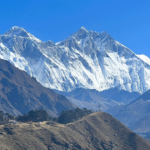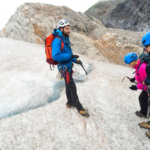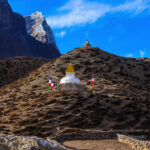Nepal is home to some of the most famous trekking routes in the world, including Everest Base Camp and the Annapurna Circuit. Beyond those well-known paths there are little known treasures waiting to be encountered.
Oh, one hidden hidden gem is Nar Phu Valley, a wild and rough spot right inside the Annapurna Conservation area. There is something very special and reserved about it, really far removed from all the hustle and bustle.
This valley untouched is perfect as an adventure spot for trekkers who are looking for an experience that is going to be less touristy and a whole lot more authentic and immersive for those who love the majestic mountains and want to learn deeply from local communities up there.
A Remote And Isolated Valley
Nar Phu Valley is a really hidden gem among trekking spots in Nepal. This secluded valley, located in the northern part of the Annapurna region, was off-limits to outsiders for many years due to its proximity to the Tibetan border.
That year 2002 actually marked the big moment when Nepal opened up trekking officially to the public. Today, that valley still maintains a striking isolation and it remains one of the most culturally intact places you’ll find in the Himalayas higher up.
Accessible only by foot, the trek to Nar Phu takes travelers through deep gorges, remote high-altitude villages, and stunning Buddhist monasteries. Since it is a restricted area, trekkers require a special permit, which helps in preserving the unique culture and environment of the valley.
A Journey Through Ancient Tibetan Culture
One of the coolest things about trekking through Nar Phu Valley is experiencing this really cool Tibetan culture that is so alive and strong here.
People in villages Nar and Phu cling tightly to their ancient way of life and traditions, in a style that closely matches that found among Tibetans who live a bit farther across that border.
The influence of Tibetan Buddhism is deeply rooted in their daily lives, and this can be seen in the beautifully adorned monasteries, prayer flags fluttering in the wind, and the traditional chortens that mark the trails.
There is something really special about going trekking and coming face to face with authentic Himalayan culture because locals are still doing things the old-fashioned way—growing crops, herding animals and trading stuff with Tibet too.
Visiting ancient monasteries such as Tashi Lhakhang Monastery provides a glimpse into the spiritual devotion of the people, where Buddhist monks engage in meditation and rituals that have remained unchanged for centuries.
The Breathtaking Natural Beauty
The Nar Phu Valley trek is a feast for the eyes, offering diverse landscapes that range from lush forests to arid, high-altitude plateaus.
As trekkers ascend, they traverse through a variety of terrains, including dense pine forests, rocky cliffs, and windswept mountain passes. The valley is ringed by some of the most breathtaking Himalayan giants— tops of the list are Annapurna II, Gangapurna, Tilicho Peak, and the awesome Lamjung Himal. Nature’s biggest skyscrapers seem to jump right up from the earth here.
The high desert landscapes in the valley invoke the feel of Tibet and lend this place an especially romantic quality. Every step taken in this breathtaking wilderness fills the soul with admiration for nature’s raw and untamed beauty.
Best Time To Trek Nar Phu Valley
The best time to trek Nar Phu Valley is during spring (March to May) and autumn (September to November). During these seasons, the weather is stable, the skies are clear, and the views of the mountains are at their best.
The moderate temperatures make trekking comfortable, and in spring, the trails are decorated with blooming rhododendron flowers. On the other hand, autumn provides the freshest and clearest air and it is the clear favorite time for treks in this part of the world.
Winter, through December till February, brings in a lot of heavy snowfall that can make certain parts of the trail impassible, and the monsoon season from June to August can really make the going tough with intense rain and slick trails.
Accommodation And Food in Nar Phu Valley
Sorry for the confusion, but in Nar Phu Valley things get a little simpler. Places to stay don’t have as many amenities compared to areas like the big trekking paths where tea houses are more common.
It is more down to earth there. Simple guesthouses and homestays provide a cozy stay, giving trekkers a chance to interact closely with the local people.
Most accommodations offer traditional Nepali meals such as Dal Bhat (rice and lentils), Tibetan bread, momos (dumplings), and Thukpa (noodle soup). Due to the remoteness of the region, food options are limited, but the hearty meals are perfect for refueling after a long day of trekking.
Conclusion
For those who want to explore untouched Himalayan landscapes and connect with ancient traditions, Nar Phu Valley trek is an amazing journey into the heart of Nepal’s remote mountain wilderness.
If you seek solitude, challenge, and breathtaking scenery, Nar Phu Valley is the perfect destination for your next Himalayan adventure.







